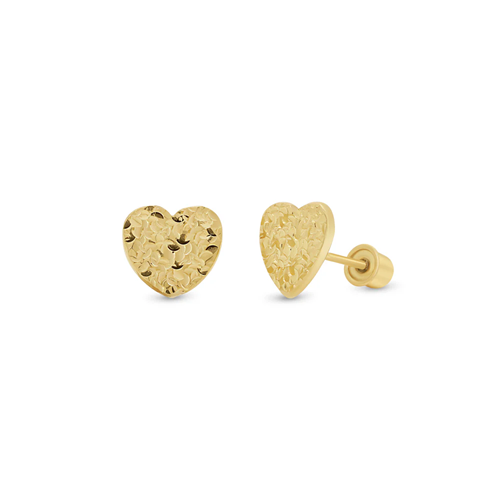
What is Considered Fine Jewelry | Locking Holdings
Share
What Is Considered Fine Jewelry? A Complete Buyer’s Guide from Locking Holdings
In today’s market, the term “fine jewelry” gets used often—but not always accurately. So, what exactly qualifies as fine jewelry?
Is it the price tag? The sparkle? The brand name?
At Locking Holdings, we believe in transparency. Whether you're investing in your first piece or curating a collection, it’s critical to understand what “fine jewelry” actually means. In this guide, we’ll break down the essential elements that define fine jewelry—so you can shop smarter, invest wisely, and enjoy your jewelry for years to come.
At its core, fine jewelry is made from precious metals and genuine gemstones, crafted with superior technique and built to last generations.
Unlike fashion or costume jewelry, fine jewelry has intrinsic value and is often handed down as a keepsake, worn daily, or collected for investment.
The Core Elements of Fine Jewelry
Fine jewelry is made from high-value, naturally occurring metals, such as:
- Gold (14k, 18k, or 24k)
- Platinum
- .925 Sterling Silver
- Palladium (less common, but rising in popularity)
These metals are not just beautiful—they’re durable, hypoallergenic, and retain market value over time.
2. Genuine Gemstones
Fine jewelry incorporates natural or lab-grown gemstones that hold gemological value. These may include:
- Diamonds
- Sapphires
- Emeralds
- Rubies
- Aquamarines
- Tanzanites
- Lab-grown diamonds (IGI/GIA certified)
Synthetic or imitation stones (glass, resin, cubic zirconia) are not considered fine.
3. Craftsmanship
True fine jewelry is either:
- Handcrafted by skilled artisans
- Machine-crafted to high precision with quality controls
The result is visible in the detail: perfect stone settings, seamless soldering, symmetry, and balance.
4. Certifications and Hallmarks
You’ll find fine jewelry often comes with:
- Metal purity stamps (“18k”, “PLAT”, “.925”)
- Gemstone certificates (from GIA, IGI, or AGS)
- Appraisal documents for insurance purposes
Locking Holdings includes additional blogs for review and insight, helping you make purchasing decisions.
5. Durability
Fine jewelry is made to last. With regular maintenance and proper storage, it can survive:
- Everyday wear
- Environmental exposure
- Generational ownership
Compare that to fashion jewelry, which can chip, tarnish, or break after minimal use.
Why Does the Definition of Fine Jewelry Matter?
Knowing what qualifies as fine jewelry protects you from overpaying for low-value pieces or being misled by misleading labels.
It ensures that when you search for “affordable fine jewelry”, you’re looking for real value—not a cheap knockoff in fancy packaging.
Key Features of Fine Jewelry (Comparison Table)
|
Feature |
Fine Jewelry |
Fashion Jewelry |
|
Materials |
Gold, platinum, sterling silver |
Brass, nickel, copper, plated alloys |
|
Gemstones |
Genuine or certified lab-grown stones |
Plastic, glass, CZ, synthetic crystals |
|
Craftsmanship |
Artisan-crafted, secure settings |
Mass-produced, glued stones |
|
Lifespan |
Years to decades |
Months or occasional use |
|
Value |
Appreciates or retains value |
No resale value |
|
Allergy Risk |
Low (hypoallergenic metals) |
High (nickel and unknown alloys) |
|
Certifications |
GIA, IGI, hallmarks |
None |
Common Misconceptions About Fine Jewelry
❌ “If it sparkles, it must be fine.”
✨ False. Rhinestones and CZ may look dazzling under store lights, but they aren’t valuable or durable.
❌ “All gold jewelry is fine jewelry.”
💡 Not quite. If it’s only gold plated, it isn’t fine. Look for solid gold or at least 14k standards.
❌ “It’s expensive, so it must be fine.”
🧠 Marketing can be deceiving. High price doesn't always mean high value. Many brands mark up fashion jewelry to luxury levels without delivering quality.
What About Lab-Grown Diamonds?
Lab-grown diamonds are real diamonds, just created in controlled environments rather than mined from the earth. They:
- Have identical chemical structures to natural diamonds
- Are graded and certified
- Are more sustainable and affordable
At Locking Holdings, we offer both natural and lab-grown diamonds, depending on the client’s values and budget.
Is “Affordable Fine Jewelry” Possible?
Yes. Fine jewelry doesn’t have to break the bank.
Locking Holdings is built on this principle—providing entry-level fine pieces that meet all quality criteria (real metals, genuine stones, expert design) while staying accessible to new buyers and collectors.
💬 If you’re searching “where to find affordable fine jewelry,” start with brands that value transparency, craftsmanship, and integrity—not just big marketing budgets.
Final Thoughts
Fine jewelry is more than just adornment—it’s a statement of quality, craftsmanship, and intention.
When you understand what defines fine jewelry, you don’t just buy better—you buy smarter.
Whether you’re building a legacy or treating yourself to something meaningful, Locking Holdings is your trusted guide into the world of authentic, beautiful, lasting jewelry.
Ready to Begin?
🔗 Visit LockingHoldings.com to explore our curated selection of ethically sourced, beautifully crafted fine jewelry collections.
